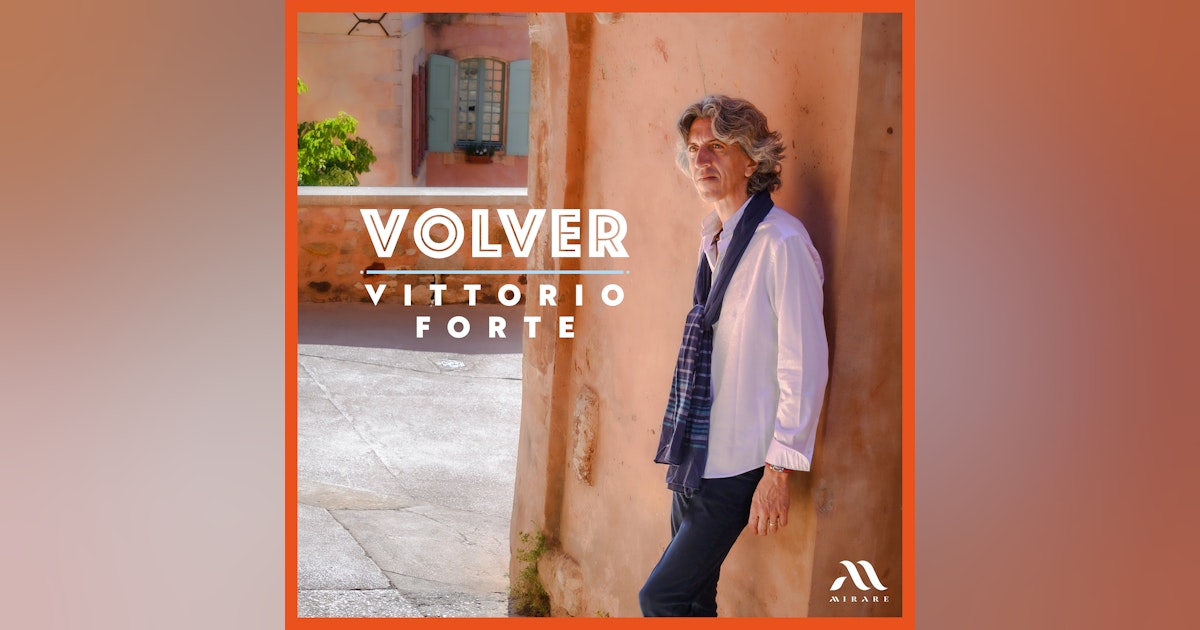Volver: Vittorio Forte explores South American piano music
A truly colourful journey though the piano music of South America

For his first recording for the Mirare label, Calabrian pianist Vittorio Forte has chosen a programme of South American music. A student of Argentinian pianist Jose Lepore, the present album is the result of the love Lepore instilled in Forte for the music of his continent.
From the 1935 film Tango Bar comes Po una cabeza by Carlos Gardel (1890-1935), heard here in a fine piano arrangement by Forte himself. He captures the soul of the piece perfectly, with a nice sense of the new - it sounds almost improvised. Let's also hear against a vocal version, Fatima Said on her Waner Classics album, Keleidoscope, and finally let's have the entire film (!) with English subtitles::
Here's a vocal version, Fatma Said from her album Kaleidoscope, so you can hear how it woks with woads (it's a vey slick performance!):
.. and here's the film:
Carlos Guastavino's 1953 Las Niñas smouldes, a tone poem in miniature. One of Guastavino's more famous pieces, Bailecito, which follows, is altogether more gentle and straightforwardly song-like:
It is with noting the if Guasavino's sophisticated sound wold appeals, Martin Jones has recorded his complete output for Nmbus. Here's Jones' Bailecito:
Interesting to hear counterpoint in Ponce's Rapsodia Mexicana (that composer's Rapsoidia cubana seems to be.touch more famous); his Rapsodia mexicana No. 1 melds South American /Iberian heart with European form and gesture, making for a fascinating mix. It is also virtuoso, in Lisztian mode at times, and Forte is superb:
Santiago-born Alfonso Leng (1884-1974) offers a complete contrast in his Dolores (subtitled, poems for piano), but linked in a definite influence of the central canon: here, Chopin. It is also wonderful to have two pieces by Villa-Lobos ,"Impressões sesteiras" from Ciclo brasileiro (cast in a lovely C sharp minor), W 174 and Valsa de dor, the first whispered passion, and the famous Valsa del dor brilliantly contrastive and fresh. Here's the first of those, brilliantly, sensitively played by Forte:
It's a long way from Villa-Lobos to Lecuona; Forte seems to be showing us just how diverse this repertoire is. La conga de media noche (the first of six Danzas Afro-Cubanas), is playful, spiky, harmonically pungent, for example:
It is also nice to have lyrical contrast via a set of four pieces by Brazilian composer (and conductor) Alberto Nepomuceno (1864-1920) .

This set of pieces (Nepomucheno's Op. 13) is so beautiful, and so beautifully played, a real highlight. There is even occasional Wagnerian harmony! The finale, "Galhofeira," is like a riff on Darius Milhaud's Scaramouche. The playing is so even here, absolutely terrific:
Despite his fame, my jury remains out on the music of Astor Piazzolla. The tango rhapsody Adios nonino, finds Forte making a fine case for this composer, though. Far less known is Luis Antonio Calvo (1882-1945): there's a short article here, which includes a video of a live performance of his piece Malvaloca (Hollyhock) by the Mulati Ensemble. Forte includes two contrusing pieces, an intermezzo filled with saudade, Lajano Azul, and the a solo piano version of Malvaloca.
We started with Gardel, and with Gardel we finish: the myserious Volver, from which the disc takes its title, anther transcription by Forte himself:
Vittorio Forte plays on a fine Italian-built Fazioli F278 provided by Clavier's Concert.
This excellent is disc is available via Amazon here; it is a truly colourful journey though the piano music of South America. Streaming below.


